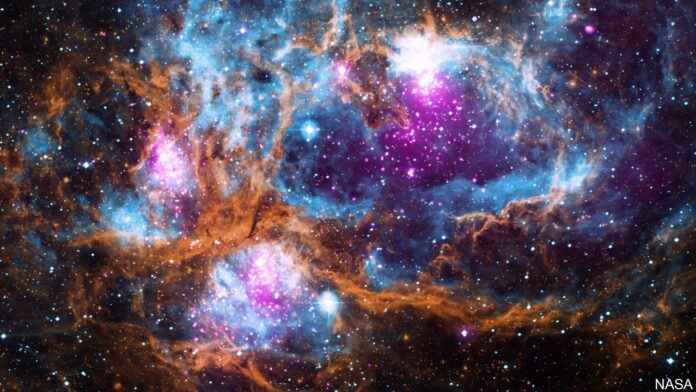I know you have other things on your mind this week, but taking time to enjoy the peaceful starry skies may allow you some time to pull aside from whatever is weighing on your mind and realize that God is in control, even when it seems like chaos reigns.
The now-familiar evening stars have moved westward, and Orion is past the meridian by 9:00 P.M. The three stars of his belt are one of the most recognized star patterns and a great tool to help you find other splendid objects in the area,
The two following paragraphs are from a 2003 column when we still had an astronomy club for teens which met at Lucio Middle School
The 40+ students who were present at the monthly Lucio Middle School star party enjoyed seeing the Great Orion Nebula through telescopes. The “sword of Orion” holds many beautiful treasures, including the Horsehead Nebula and a star pattern called The Trapezium. The diameter of the Great Nebula is more than 20, 000 times the diameter of our solar system! There is enough hydrogen and helium to form at least 10,000 stars like our sun!
Using a search engine for the internet will enable you to find images of the Great Orion Nebula and see for yourself just how magnificent it is. The colors are splendid-and you won’t see those through a telescope since our eyes don’t “save” the light.
Now that we are officially in spring, we will see the familiar figure of Leo above the horizon as darkness sets in. Look eastward for a pattern of stars that looks like a backward question mark, or a sickle. This is the head of the Lion. The large right triangle that follows is the hindquarters. The brightest star in the constellation is Regulus, a first-magnitude star. The planets drift through Leo so you should get familiar with the constellation stars and then you will be able to note when there is a “guest star” as the ancients called planets.
For us the most important star in the sky is our sun! And it is only a medium sized, “ordinary” star. Maybe being an “ordinary” person is not something to fret about- we are in good company! Every second of every day the sun converts 657 million tons of hydrogen into 653 million tons of helium via nuclear fusion.
The “missing” 4 million tons of mass are converted into energy and hurled into space as heat and light! Try that one in the physics class! When we eat, we are eating the sun’s energy stored in that food and our body in turn converts it into energy to be used to keep us alive and doing all the exciting (or humdrum) things we do. Of course, every star is also doing the same thing on a greater or lesser scale, but there is no human that we know of to benefit from it.
Planets to enjoy in the predawn sky are easier to observe since we are now on DST. Jupiter, Saturn and -with a telescope-Neptune, are sharing the sky. The first two are in the southeast in Capricornus, the Sea Goat, Neptune is in the east. A The evening sky has Mars slowly passing through Taurus into Gemini. We anticipate the return of brilliant Venus in mid-April. Keep an eye out for that lovely planet.
The next time you look at the sky, think about the constancy of it and how we can predict the regular motions and how we are alive because of this, and thank the Creator for making it all so wonderful. It means a lot to be a human being on planet Earth.
Until next week, KLU!




